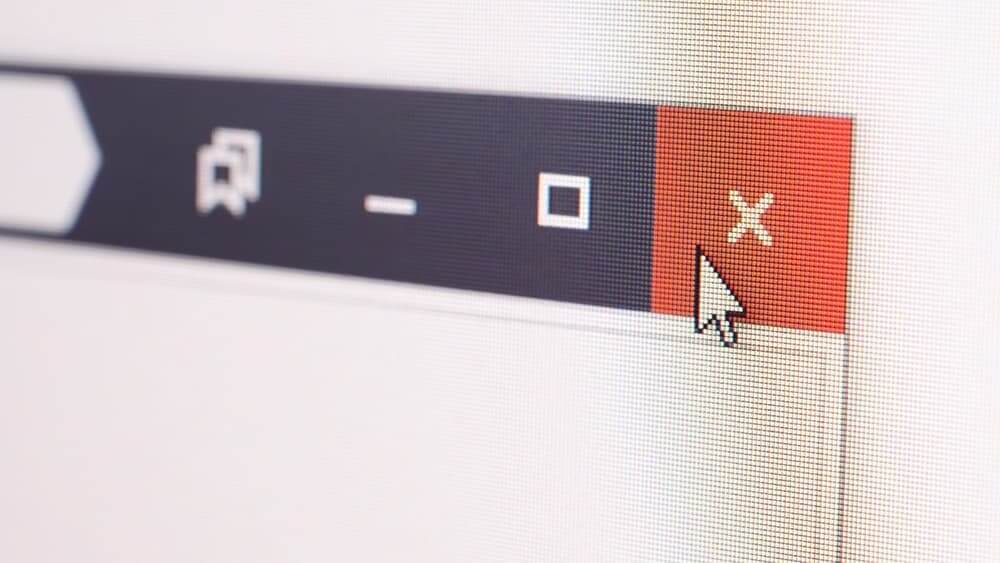According to customer intelligence leader CallMiner, U.S. companies lose $35.3 billion annually due to unplanned consumer switching, known as churn in the industry.
To view that fact more positively, that’s a substantial unrealized opportunity for companies. Most companies understand, at least conceptually, that generating new customers is expensive compared to winning repeat business and referrals from existing, loyal customers. Unfortunately, few organizations are proactive regarding reducing churn; instead, they get caught in the hamster wheel of never-ending lead generation investment.
Here’s another remarkable churn statistic: 78% of customers have backed out of purchasing because of a negative customer service experience.
No company is perfect. You cannot wholly eliminate customer churn or turnover in your customer retention strategy. And customers today are more educated and fickle than ever. Some portion of customer turnover is simply out of your control. It’s a challenging business situation that can be tackled and overcome in your sales pipeline management.
How quickly you can identify a customer attrition problem, how rapidly you can remedy this issue, and how successful you are at turning churn into a positive revenue force will all determine how churn impacts your bottom line over the long term.
To grow, you must tackle customer churn head-on. You can do this in several ways, all focused on improving the customer experience with your brand.
First, Understand What Churn Rate Is
HubSpot defines churn rate as “the percentage of your customers or subscribers who cancel or don't renew their subscriptions during a given time.” This same approach can be applied to your client or customer base.
The churn rate is calculated by dividing your total number of lost customers by your total number of customers within a specific period. You can look at customer churn in any time frame, but most companies will analyze it quarterly to identify trends.
So, a company that started a quarter with 100 customers and lost eight over three months would have a churn rate of 8%. Like most Key Performance Indicators (KPIs), you can make them simple or more complex. Whether you use a simple or complex formula, the bottom line is this: If your churn rate exceeds your customer acquisition rate, you’re not in a good place.

32% of all customers would stop doing business with a brand they loved after one bad experience.
Then, Be Proactive About Measuring Churn in your Sales Retention Strategy
Many companies sense that customer retention is a challenge but don’t have the systems in place to obtain the actionable data required to remedy this issue. To improve the churn rate, you need to measure and analyze it to take action proactively.
- Define monthly, quarterly, or annual tracking time frames, depending on your industry and business cycle.
- Build your basic churn rate formula according to your business needs and the cycles of your sales pipeline.
- Use enterprise software or develop churn tracking tools to capture data and produce reports that empower your team to better understand churn patterns and impacts.
- Include churn rates and trends in internal reporting meetings, and be sure to assign specific team members to churn (or a suite of related KPIs) so accountability is baked into your process
- Prepare your teams to be agile to respond to threats and opportunities from churn data analysis.
Next, Tie Churn to Revenue in your Sales Pipeline
To leverage churn data to improve revenue generation, you need to link poor or strong churn rates to revenue. It’s not as simple as it sounds. This is where the simple churn rate formula becomes a bit more nuanced and complex.
- For simplicity’s sake, we will look at one month. Linking churn and revenue can be done for any period but doing so every quarter brings in other complicated factors (this is a subject for a whole other blog)
- Calculate your anticipated Monthly Recurring Revenue (MRR) at the beginning of a month
- Your MRR is revenue that reliably comes every 30 days, less any revenue generated from existing customers via cross-selling and upselling
- Divide your MRR by the amount of MRR lost over the month to get your monthly revenue churn number
- For example, if your MRR were $100,000 at the start of the month and were $50,000 at the end of the month, with $20,000 in existing customer revenue, your revenue churn calculation would be like this:
$100,000 MRR - $50,000 Churn = $50,000
$50,000 - $20,000 (existing customer revenue) = $30,000
$30,000 / $100,000 MRR = 30% Monthly Revenue Churn
How many lost customers or clients makeup that 30% loss will depend on the makeup of your customer/client base. The critical takeaway is that you need to link customer churn to revenue generation or failure. Still, these two data points will only sometimes match up due to the divergent profiles of your customers, i.e., some produce higher revenues than others every month.
Now, we Better Understand How Churn Broadly Impacts Revenue.
Customer churn rate has long-term ramifications for your bottom line on several fronts. Retaining customers and generating new business from them is far less expensive in time and treasure than generating new leads and converting them into new customers.
Here are some critical stats to consider when educating yourself about the importance and impacts of customer churn rate, courtesy of our friends at Finances Online.
- The probability of selling to an existing customer is 60-70 percent. The chance of selling to a new prospect is 5-20 percent.
- Eighty percent of your future profits will come from just 20 percent of your existing customers.
- Loyal customers are gold: they are worth 10x more than the value of their first purchase.
- A typical American business will have a churn rate of 30%
- 78% of consumers are more likely to stay with a brand that has a loyalty scheme. (Bond, 2020)
Finally, Use Churn to Guide Customer Experience Improvements
Churn rate and revenue churn analysis exist to help your business retain more customers for longer. It’s that simple. You’ll never get your churn rate to zero, but you can take action to identify the weak links in your customer experience. In summary, customer service is one part of your customer experience.
An essential step toward improving the customer experience with your manufacturing brand is understanding the difference between customer service and customer experience.
The customer experience is the collective perception of your brand generated by a host of engagement experiences. Customer service is one aspect of the customer experience that includes in-store experiences, social media engagement, website interactions, and any other interface with your brand.
Although essential, customer service is just one part of the customer experience delivery system. Understanding this is critical to creating and executing an excellent experience platform.
Leveraging customer churn and revenue churn data can empower your business to create a powerful new customer experience strategy that can be executed consistently across all your engagement channels, including customer service.
Your business will retain its customers at a higher rate, win repeat business, garner more and higher-quality referrals, and significantly increase revenues and customer lifetime value (CLV).
Bill Gates once said, “Your most unhappy customers are your greatest source of learning.”
Often, companies don’t want to dig into why a client leaves; instead, they focus on replacing that customer as quickly as possible, leaving a valuable learning opportunity unrealized. Constantly pouring money into lead generation and new customer acquisition while failing to understand why customers go is anathema to growth. This is where you need to include a customer retention strategy in your sales pipeline.
Using churn and revenue churn analysis to look inward at what might initially be ugly and unpleasant is critical to growing your business. Remember, today’s consumers are in control; they are highly informed, have many options, and will leave your brand for good, sometimes after just one bad customer experience. You cannot keep every customer from going, but you can certainly take action to ensure more customers stay. Perfection is not in the cards, but churn rate improvement is realistic and can tremendously impact your revenue production.
Unchecked customer churn can have devastating long-term impacts on your bottom line. At the same time, understanding and proactively addressing churn is a huge opportunity for a business to take things to the next level and jump off the lead-generation hamster wheel.
Take control of churn, and you’ll take control of your company’s future. Contact Illumine8 today for a free assessment of your customer retention marketing efforts and turn those existing customers into repeat sales.

